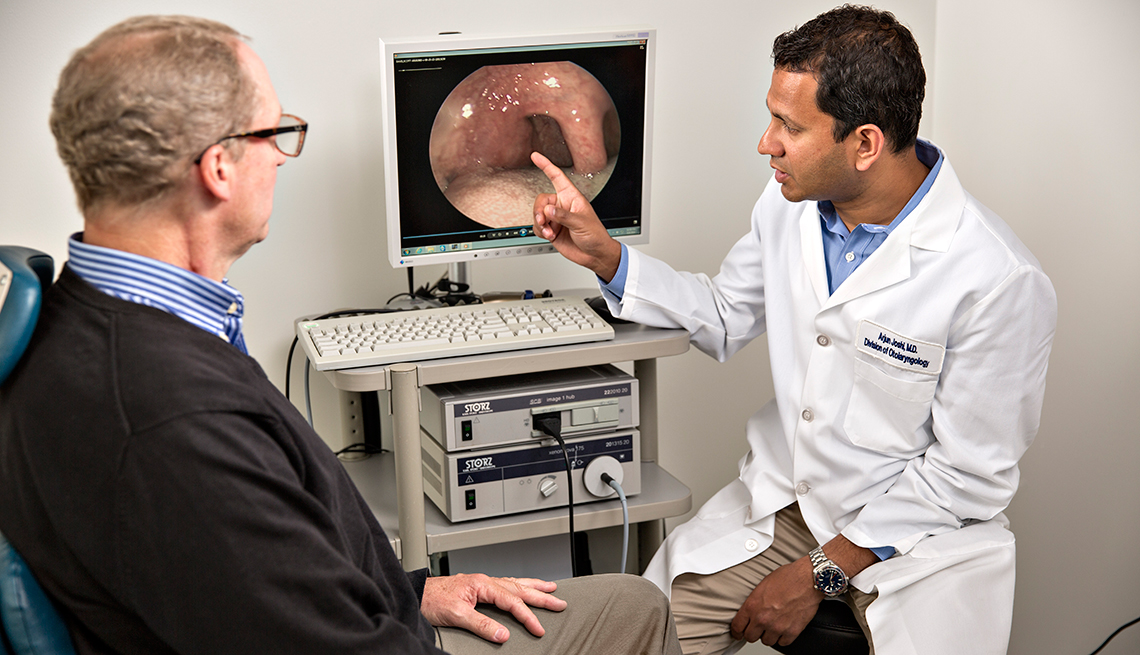HPV Cancer on the Rise
Middle-aged men are being hit hard. Here's what you need to know
by Peter Jaret, AARP The Magazine, Oct/Nov 2016

Researchers are now convinced that HPV causes most oropharyngeal cancers; the latest findings show that 3 out of 4 cases of the disease are HPV-positive. — Evan Kafka
Even before the biopsy results, Scott Davis sensed something was wrong. On a camping trip with his wife in the summer of 2015, the 55-year-old AARP creative director from Washington, D.C., noticed a small lump in his neck. Back home, his primary care doctor recommended waiting a couple of weeks. "But I just didn't feel comfortable waiting," Davis says.
He was right to be worried. Arjun Joshi, a surgeon at George Washington University, performed a biopsy on his neck that showed cancer in his lymph nodes; a subsequent examination revealed that the cancer's source was one of his tonsils.
The diagnosis came as a shock. "Cancer doesn't run in my family," Davis says. "I've always thought of myself as healthy and active. I'm not a smoker."
Cancer And Health Conditions
Joshi told Davis that he was not alone, and that the majority of cases he sees are similar. Indeed, more and more men just like Davis — healthy, in their 40s to 60s — are showing up with a form of throat cancer that targets the tonsils and the back of the tongue, an area called the oropharynx. One of Davis' colleagues, in fact, is battling the same form of cancer.
Oropharyngeal carcinomas are diagnosed in more than 15,000 men and women in the U.S. each year. But public health experts warn that the number of cases in men over age 50 will rise dramatically in the coming years.
Zeroing in on an unexpected culprit
Thirty years ago, as the overall incidence of head and neck cancers began declining, experts assumed that oropharyngeal cancers were on the run. Smoking was the leading risk factor. As tobacco use declined, so would cases of the cancer. But instead, even as fewer Americans smoked, doctors began to diagnose more oropharyngeal cancers. Many patients, like Davis, were younger than the typical ones doctors had seen before. Men outnumber women 4 to 1.
Maura Gillison, an oncologist at the Ohio State University in Columbus, was one of the first researchers to suspect that the cancers were being caused by an unexpected culprit: human papillomavirus, or HPV, the same virus that causes cervical cancer in women.
"HPV had turned up in some tissue samples from oropharyngeal tumors, but we didn't know if that was just a coincidence," she says. It wasn't. When Gillison tested tumor samples from patients with oropharyngeal cancers, she found that about 25 percent contained the virus.
"At the time, most people in the field thought I was crazy," Gillison says. But new evidence kept coming. In a 2007 study, Gillison found that those with head and neck cancer were 12 times more likely to be infected with HPV in their mouths and throats than healthy individuals.
Researchers are now convinced that HPV causes most oropharyngeal cancers; the latest findings show that 3 out of 4 cases of the disease are HPV-positive. Shockingly, HPV-positive oropharyngeal cancer is projected to overtake cervical cancer by 2020.
























